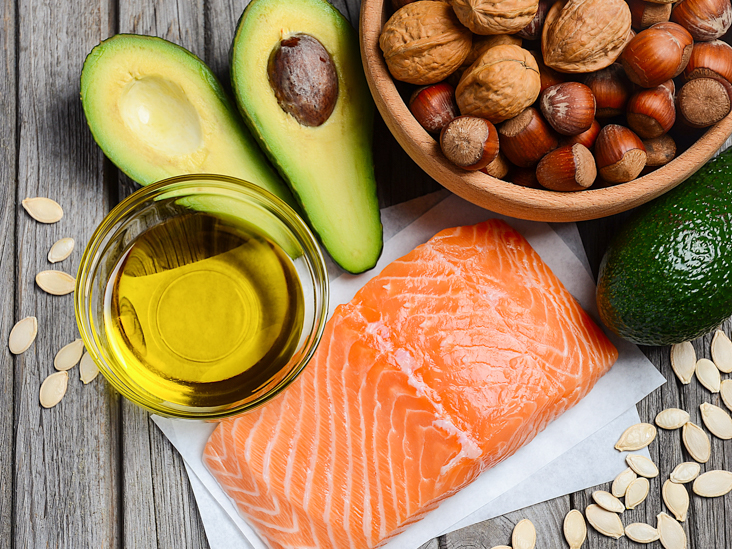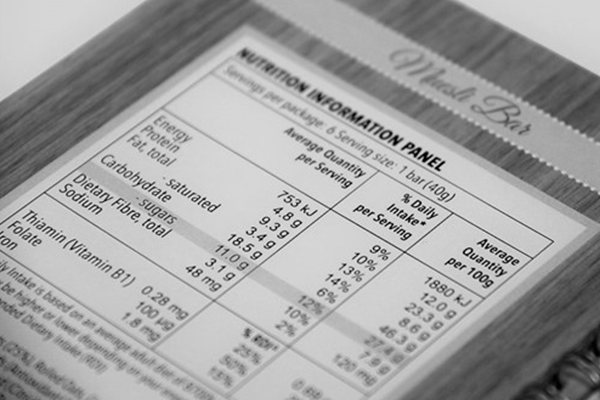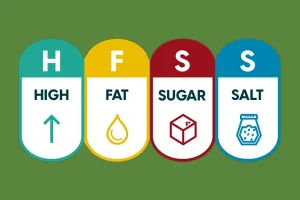Where do you start?
For consumers, buying healthy foods can be a challenge. With the surplus of options at their fingertips, it can be overwhelming to scan the aisles filled with countless brands of the same product and select the healthiest and most affordable. Similarly, for restaurant owners, selecting the healthiest ingredients to use in your dishes can also be a challenge.
Read more: How to Prevent and Manage Chronic Diseases with a Nutrition Conscious Diet
Understanding Food Nutrition Labels
Being able to properly read and understand a nutrition facts label is a foundational step in nutrition awareness and key in empowering yourself to become more educated about the ingredients you are putting into your dishes. What is the difference between “saturated” and “monounsaturated” fat? How much is “too much” sodium? What does a serving size of XYZ product actually look like? Where are these percentages coming from? Read on for some tips that will help you discover the answers to these questions and many more as you navigate the complexities of nutrition labels when designing your dishes.
Read more: The Power of Plants
The Serving Size
Understanding and applying appropriate serving sizes to your dishes is a challenge. Often times, consumers who are overweight or are struggling to lose that weight say that portion control is a pain point for them. Think about the typical serving size of pasta at a restaurant. While customers certainly appreciate the generous, full bowl that you provide, the actual recommended serving size of that brand of pasta is probably about ¼ of what you have served (i.e. instead of the 48g of carbohydrates per serving that most pasta brands contain, your dish most likely contains about 240g).
Typically, the recommended serving size is what is listed on the label. Individuals, of course, can alter what they want their standard serving size to be depending on their specific diets. This can be done with MenuSano nutrition analysis software, which is entirely customizable.
For your reference, here are some typical serving sizes of common foods:
- Fruit (1 cup)
- Mashed potatoes (½ cup)
- Pasta (1 oz. or ½ cup cooked)
- Chicken breast (3-4 oz.)
Read more: Nutrition Info

Scan Total Calories Mentioned
It’s time to talk about the forever-dreaded word: calories. For health-conscious customers, this will be the first word they look for and the first question that will come to their mind.
Read more: Want Happy Customers? Serve Happy Food!
How many calories are in this dish?
It is required that food products list on their nutrition labels how many calories an item contains, but the bigger question we should be asking here is: where are these calories coming from? Fat? Carbohydrates?
The majority of consumers, unless they are following a specific diet, adhere to a 2,000 calories per-day regimen. Therefore, when selecting at the calorie count of a particular dish or ingredient, they will automatically take into consideration the amount of calories they must subtract from their daily total as a result.
Read more: The Difference between Diet and Nutrition
Calories from fat vs. calories
It is important that you as a food provider understand the difference between calories (in general) and calories from fat. The distinction is simple; calories from fat are stored in your body longer and are not as easily burned off as calories from carbohydrates or protein. This, in large amounts, is what leads to eventual weight gain. Therefore, pay attention to and decrease as much as possible the excess calories from fat that you include in your dishes.
Read more: UKs New 2022 Menu Labelling Law
Follow the Percentage Daily Value
Return to the previous point made about most consumers adhering to a 2,000 calories per-day diet, the percentages that you see on nutrition labels are calculated using that number as a total. Percentages are indicated on the far right of the label, next to each nutritional statistic. For example:
| Calories: X | X% |
| Carbohydrates: Y | Y% |
The key in selecting a healthy ingredient or dish is looking at these percentages and ensuring that it is below 100%. For instance, if a recommended serving size of a bowl of pasta equals 45% of your daily carbohydrate intake, you should be aware of the rest of your carbohydrate consumption for the rest of the day since you have already hit nearly 50%. Of course, the percentages will change based on each person’s individual dietary needs and restrictions.
This is exactly why, when presenting nutritional information to your customers, it is important that you have the calories listed as well as the percentage numbers to provide a transparent, comprehensive set of nutritional statistics that help them to make informed decisions about what they consume.
Read more: Foods with Omega-3 Fatty Acids (and why you should eat them!)
Keep an Eye on Nutrition Terms
The phrase I like to live by in regard to nutrition terms is: “Less is more.” More ingredients means a greater chance of the product being artificial and unhealthy. The less ingredient a dish or food item has, the closer it is to its natural, original state.
A little known fact is that the order of the ingredients on a nutrition label matters immensely. For example, if the list of ingredients looks like this,
INGREDIENTS: Sugar, Water, Vanilla Extract, Salt
that means that the ingredient highest in quantity is sugar, followed by water and so on.
While it’s impossible to know the nutritional value of every single ingredient out there, there are certainly a few big ones that you should be aware of and do your best to keep out of the dishes you offer to customers. Among them are:
- Aspartame
- Corn syrup
- High fructose corn syrup
- Partially hydrogenated oil
- Benzoic acid
- MSG
- Sodium nitrate
Read more: Natasha’s Law and New Labelling Requirements
Select Low in Sodium, Saturated Fat and Added Sugars Products
We know. It’s much easier said than done. These ingredients and many others that contain hidden health dangers are common in nearly every ingredient and dish that we serve. In most cases, it’s impossible to make dishes without including these ingredients on some level. Odds are that health-conscious customers are aware of the presence of these ingredients in food and their consequences, and that means you should be too. Here are some of the benefits of keeping the amount of sodium, saturated fat and added sugars low or nonexistent in your dishes.
Low-sodium: contributes to lower blood sugar, reduces risk of kidney disease and heart conditions
Low saturated fat: contributes to weight loss, leads to lower cholesterol levels, provides you with more long-term energy
Low added sugars: contributes to more regular sleeping patterns, healthier skin and teeth, boosts your mood, promotes healthy cognitive function, improves memory, reduces risk of heart disease.
Read more: Simple Solutions to Improve Your Diet

Choose Plenty of Fiber, Vitamins, and Minerals
For as many bad ingredients that exist in food, there are an equal amount of good ones listed on that lengthy label. Keep a lookout for these necessary, healthy ingredients that exist in large amounts in the meals you serve and consistently attempt to incorporate more of them into your dishes.
Dietary Fiber: normalizes bowel movements and helps break down carbohydrates, lowers cholesterol levels, assists in controlling blood sugar levels
Protein: provides long-term energy, helps build muscle, promotes healthy weight loss
Carbohydrates: In moderation, carbohydrates provide energy (especially for athletes), fuel kidney and heart muscles, support central nervous system and aids digestion
Vitamins (A, D, C, E): Keep bones strong, heal minor wounds (ex. Small cuts), boost immune system, repair general cell damage
Monounsaturated fats: reduce risk of heart disease, decrease inflammation
Read more: Benefiting from the Slow Season: A Guide for Restaurants

MenuSano’s Role to Help You Understand Nutrition Labels
MenuSano nutritional analysis software has great value in terms of being transparent about your ingredients with customers as well as educating yourself about what you put into your dishes. Our user-friendly nutrition facts label software allows you to customize and break down the nutritional content of all of your dishes. The process is very quick and simple: design your dishes, input your ingredients, print out the label, and offer it to your customers with your menu.
In implementing the MenuSano’s software, you will be able to give your customers the unique opportunity to learn about the ingredients they are consuming and promote a better, overall awareness of serving size, and recommended daily intake of key nutrients (protein, carbohydrates, sodium, etc.) Not only will your customers feel more informed as consumers, but you will feel the same as a food provider.
You can get started with a FREE trial today!



















